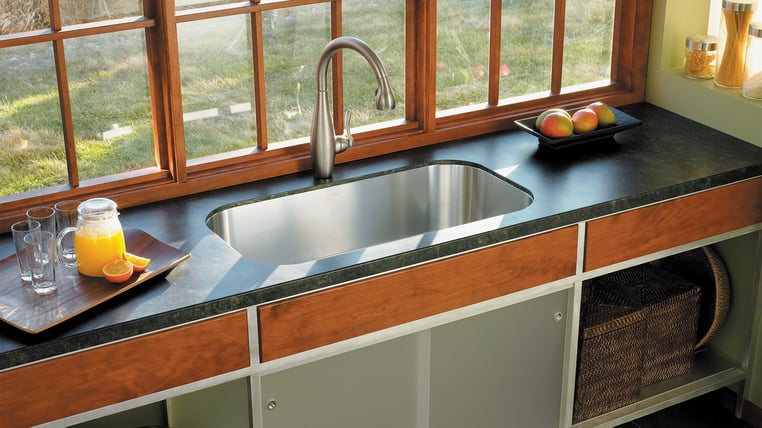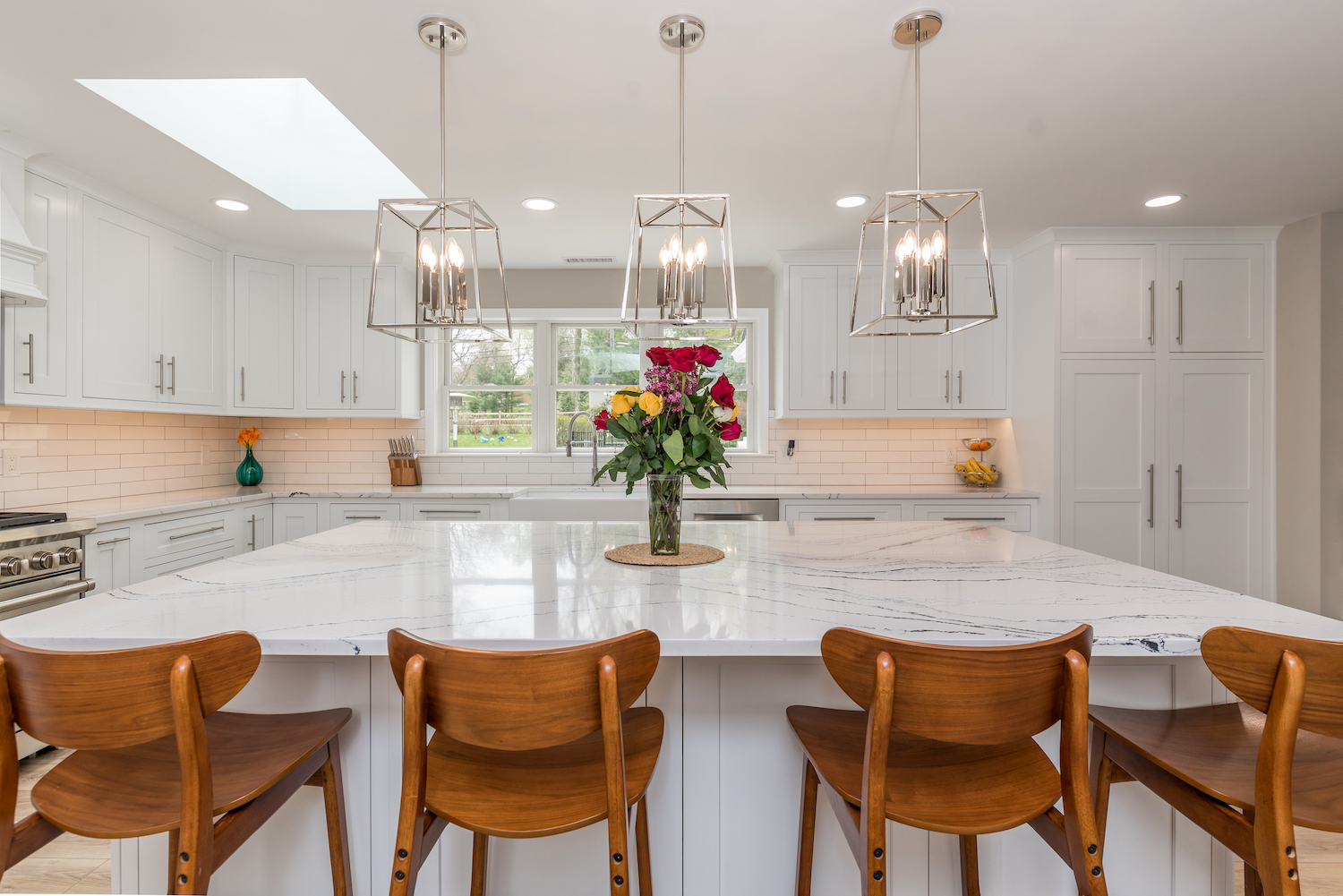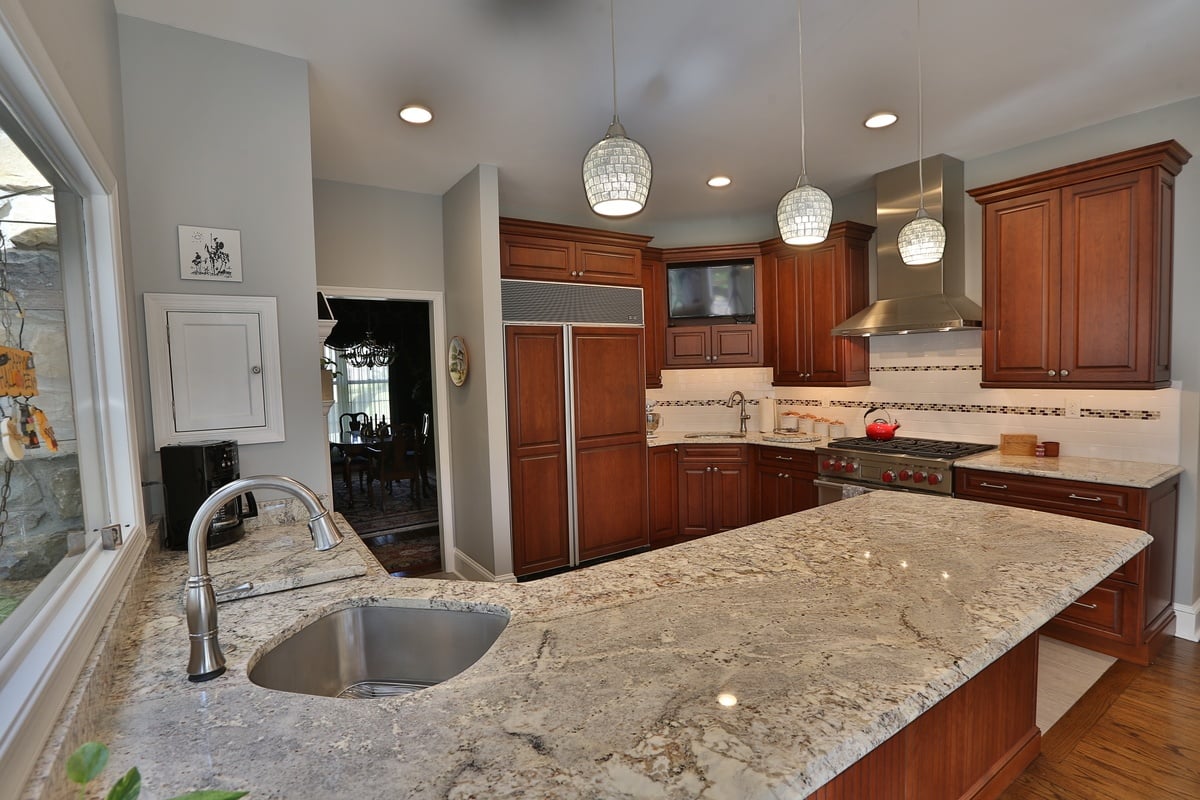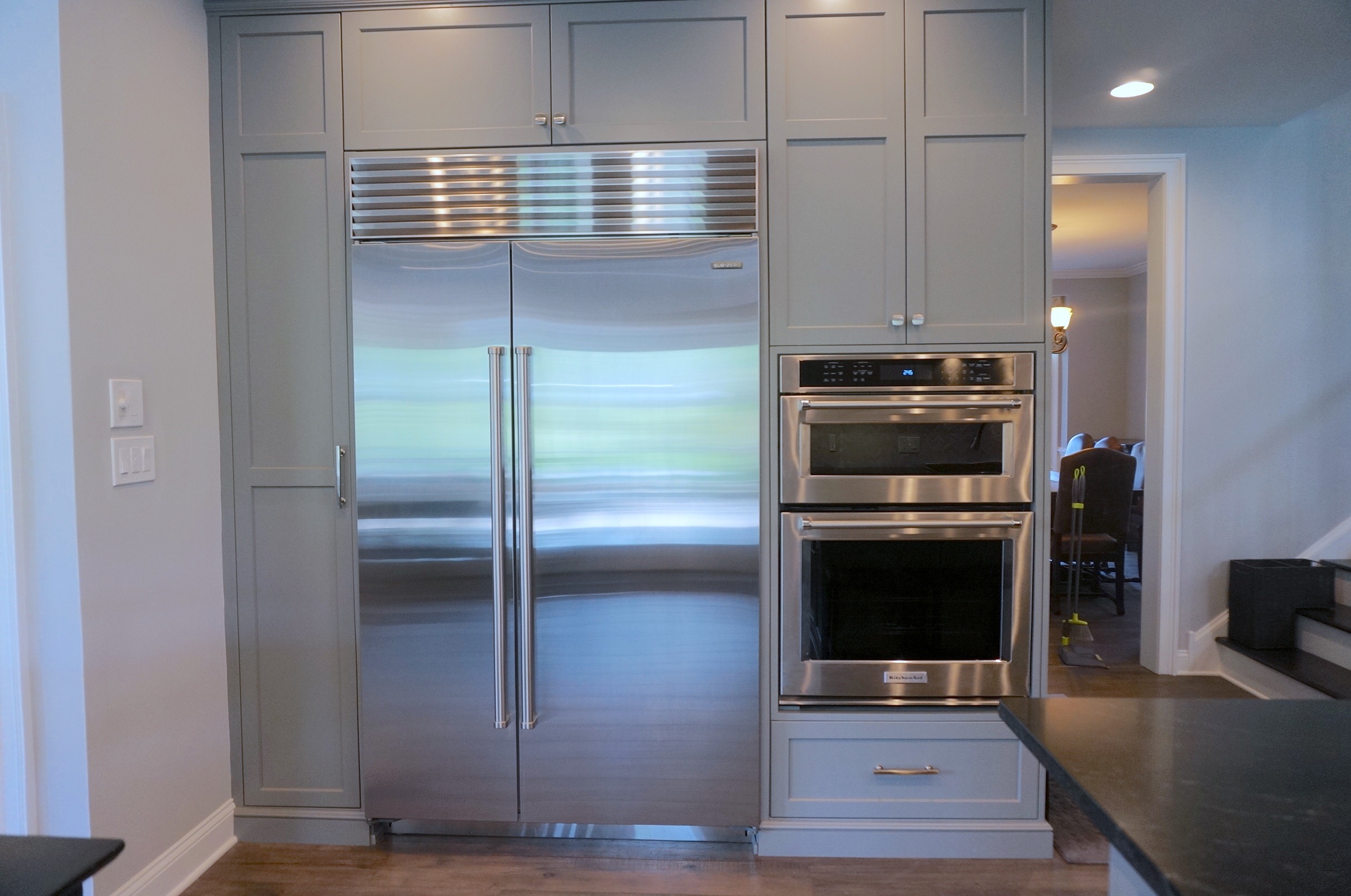If you’re about to embark on a kitchen remodel, one of the biggest questions is how to choose a countertop. Pick right, and it can add pizzazz, a blast of color, texture, and sparkle; it’s also a workhorse that must withstand everything from hot pots to sharp knives.
Given its star status, this surface comes in a wide array of stones and styles, each with its own strengths and weaknesses. Check out this crash course on the materials, costs, pros, cons, and more you’ll be glad to know before you begin your kitchen or bathroom remodel.
Photo from kohler.com
Slab
This is how all natural stone countertops start—as large chunks that have been sliced into 5-by-8-foot pieces about 3/4 inch to 1-1/4 inch thick. No two slabs look alike, so be sure to show up at the granite yard yourself to pick your favorite. Don’t rely on “samples,” which give you only a general idea what the stone will look like. Make sure the stone yard tags your slab and records the slab number on your receipt. For good measure, take a selfie with your slab so you’ll have proof of which slab you purchased.
Edge profile
Edges are finishing touches that give countertops a personality. You can select a simple edge for a contemporary feel or an intricate edge for a more classical, ornate look. Remember, the fancier the edge, the pricier and harder to clean, because kitchen gunk likes to collect in the swoops and gullies of decorative edges. Here are some of the most popular countertop edges.
- Straight: Simple, no-nonsense, polished edge that finishes the slab.
- Quarter round: Slight curve that makes the slab look especially thick. Great for kitchens and bathrooms because water rolls off the edge.
- Full bullnose: Rounded edge that’s easy to maintain and gives counters a fluid look.
- Ogee: Edge with an S-shaped curve which gives traditional kitchens a fancy feel.
- Waterfall: Multiple, rounded edges that look like a cascading waterfall and are a bit harder to clean.
Overhang
The countertop edge that protrudes beyond the base cabinets, typically by 1 to 1.5 inches. Not only do overhangs look interesting, they also prevent spills from dribbling into cabinet drawers and cupboards. Overhangs on breakfast islands often are 12 inches to accommodate stools. If you go out farther, you’ll likely need additional supports like metal L-brackets or wooden legs.
Granite
Granite has consistently landed on the top 10 lists of desirable features among builders surveyed by the National Home Builders Association. And for good reason: This hard, naturally occurring composite of quartz, mica, and feldspar is resistant to scratching; also, each slab mined from the ground is unique. Granted, granite is not cheap. Prepare to pay $60 to $100 per square foot.
Soapstone
Mined in the Appalachian mountain range, this up-and-comer in the countertop arena is a gray or black stone consisting mainly of talc, which produces a white-veined looked and soft, “soapy” feel. Since it’s softer than most natural or engineered stone, it’s easier to cut and shape. The downside, of course, is that it’s easier to chip. That doesn’t stop celebrity chefs like Guy Fieri and Paula Deen, who reportedly have soapstone kitchen counters. The typical cost is $50 to $100 per square foot.
Caesarstone
It’s also called quartz, but don’t be fooled—this countertop is human-made, not mined (thus its more accurate description as “engineered stone”). It’s composed mostly of crushed natural stone (usually quartz) and a binding resin. It’s stain- and scratch-resistant, though it often doesn’t have the natural charm of granite or marble. But it will save you some cash, costing as little as $40 per square foot to install.
Laminate
Remember Formica? That’s just a brand name for plastic laminate. It can look like granite, marble, and just about anything else, but it is actually a combination of paper and resin bonded through high heat and pressure. Although cheap ($10 to $40 per square foot), laminate countertops can look shabby fast, because they’re easy to cut and scratch. If you chose a laminate countertop, invest in several good cutting boards.
Corian
This popular countertop brand from DuPont is made from acrylic and polyester blends. It looks warmer than stone and comes in a variety of colors often not found in nature. Also, seams are invisible, so you can create a vast, smooth surface, which is appealing to many homeowners. It costs about $40 per square foot.
Sealing
Over time, food, grease, and wine can stain granite and other natural stones, particularly marble. Periodically sealing the stone with solutions that coat the surface or soak into the stone will help prevent damage. The lighter the color of the stone, the more porous it is and more often you should seal it, typically every three months to a year. Don’t forget to open windows when sealing, because breathing chemical fumes can be harmful. You, after all, are not made of stone.
Sink reveal
The size of the hole to accommodate undermount sinks installed under the counter. The bigger the sink reveal, the more sink edge you will show. A “positive reveal” means the sink rim is exposed around the opening, typically 1/8 inch, showing off your beautiful sink. A “zero reveal” lines up the sink and counter edges, creating a flush look. A “negative reveal” is when the counter extends over the sink edge, creating a sleek, contemporary look.
Which “reveal” is best for you depends partly on the look you like best, but you should also factor in how easy they are to clean. Both positive and negative reveals leave a space around the sink where crumbs and bacteria can collect; with negatives, that gunk is harder to reach, as it hangs under the edge of your cool new counter.





